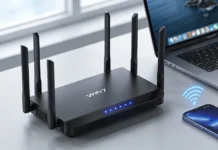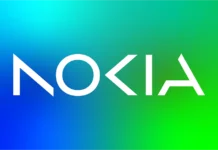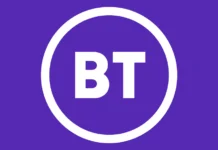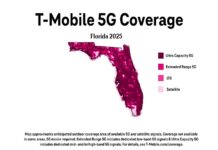Statista goes on to report that the telecom industry has gone on to experience tremendous progress in 2024. It is worth noting that by the end of the year, almost $1.6 trillion was spent across the world, which represents a 4.3% rise as compared to the previous year. Such kind of growth predisposes a consistent upward trend, which is driven by the latest trends, such as rising investments in terms of the global 5G value chain, innovative digital services, and network expansion that offers a better customer experience. To put everything into perspective, the telecommunications industry doesn’t rest on its laurels.
These sorts of advancements and many others are going to consistently reshape communication as we know it. Let us now discover the trends which are set to define telecom industry in 2025. This ever-growing industry standing still is like trying to catch a signal in a zone that is completely out of it. If you’re not moving forward, you’re obviously out of range.
-
The growth of 5G and its expanding spectrum
Let’s discuss one of the most crucial trends in the telecommunications industry.
While the 5G has largely been rolled out, engineers agree that certain more advancements are also possible to maximise its potential.
Although there are several major telecom companies that are claiming near-complete 5G coverage, the technology still faces barriers that are related to optimized applications as well as consistent performance. The next stage when it comes to 5G evolution is going to focus on infrastructure refining and also unlocking certain novel business options.
So how is this going to be achieved? Primarily by way of advanced use cases such as massive machine-type communication (mMTC) as well as ultra-reliable low-latency communication (URLLC).
It is well to be noted that the URLLC offers dependable and low latency connectivity thereby making it ideal when it comes to mission such as critical applications pertaining to autonomous vehicles and remote surgery. These kinds of connections may not demand very high bandwidth but would require unprecedented balance as well as ultra-low delay.
mMTC, on the other hand, goes to support 1 million devices every square mile, which is ideal for large-scale IoT rollouts. This kind of capacity is critical for sectors such as logistics, smart cities, and manufacturing, in which thousands of sensors as well as devices constantly collate, collect, and share the data.
This happens to be just the first wave of 5G when it comes to mass consumers. Now with carriers upgrading their plans for more advanced use cases, 5G is kind of evolving from a fast network to being the backbone as far as the future telecom spectrum is concerned.
-
Network disaggregation as well as virtualisation
Although the telecom industry in 2025 is expanding beyond traditional network environments, there are new approaches to network architecture as well as management, which are taking shape with the help of software-defined networking (SDN) along with network function virtualization (NFV). Unlike the conventional methods, which are dependent on proprietary hardware, NFV goes on to detach the network functions like firewalls and load balancers from their physical devices, thereby enabling them to function as software on standard service. This shift happens to bring a greater amount of flexibility and liability as well as cost savings.
In contrast to this, SDN helps operators to manage their network traffic by way of making use of software, which dynamically manages and reroutes the data flows. This is kind of essentially the roadmap to programmable and agile networks that would respond in a much quicker way in order to address the dynamic demands.
The adoption, when it comes to these virtualization technologies, goes on to turn the rigid infrastructure into a much more scalable and flexible system. In this way, it opens the pathway for a much faster service delivery opportunity in order to introduce new offerings at a cost, which is much less, and also maintenance that’s easier on pockets. Apparently, the future of the telecom industry in 2025 and beyond happens to lie within the software-driven network, which in a very seamless way adapts to the evolving market requirements with NFV as well as SDN at the core.
-
Apple has finally committed to RCS
This is as well going to be one of the biggest telecom trends of 2025. After showing resistance for years, the decision of Apple to adopt rich communication services (RCS) is all set to remold the industry. RCS has for long supported Android devices, thereby offering rich media, improved group chat functionality, and read receipts, which are not possible in traditional SMSs. However, Apple’s reluctance to embrace the standard has left the platform messaging inconsistent and fragmented.
Due to Apple’s adoption, RCS is going to become a universal messaging protocol, thereby bridging the gap between Android users and iOS. This unified approach will eradicate compatibility issues, enabling very easy communication throughout platforms. This transition is anticipated to drive the telecom providers to completely upgrade their networks by making sure of an absolute support for this technology.
This goes on to move RCS to actually be the successor of SMS by way of offering an improved and consistent messaging experience across all devices when it comes to both end users as well as enterprises that are seeking to receive communication features that are elevated.
-
AI-driven network automation along with optimization
Artificial intelligence happens to be one of the fastest adopted technologies across the telecom industry. It is indeed exhilarating to see how it has shifted from a buzzword to a crucial tool that has helped to transform network management along with service delivery. In 2025, AI, along with ML, is going to continue to be a vital source when it comes to transformation by way of optimization of complex processes, as well as automation, and that too in real time.
Artificial intelligence has also gone on to become indispensable when it comes to managing telecom networks through automating operations as well as prominently boosting the overall performance. The global market when it comes to telecommunications is anticipated to see a growth at a CAGR of 41.40% over the next 10 years. It is anticipated to increase from $1.34 billion in 2023 to a massive $42.66 billion by 2033. It is worth noting that predictive maintenance goes on to allow AI models to train on network data for possible pitfalls, which can be easily identified before time, and hence slash the downtime while at the same time lowering maintenance costs. On the other hand, AI-driven network optimization will go ahead and dynamically alter the traffic routing along with resource allocation in order to avoid any kind of congestion and also maintain very easy connectivity.
Apart from infrastructure, AI and telecom are altering the face of customer service too. All routine inquiries in today’s times are taken care of by chatbots as well as virtual assistants. The outcome is beyond compare. It helps telecom operators to have a swift resolution, thereby freeing up human agents in order to handle intricate issues.
-
Fiber to Satellite—the network diversity
It is well to be noted that the demand when it comes to connectivity is increasing by the day. By way of executing network diversity techniques that incorporate numerous technologies such as fiber, satellite, and 5G, telecom companies are going ahead of the conventional methods. Redundancy happens to involve duplicating the same type of connection. On the other hand, network diversity depends on making use of several mediums in order to establish numerous independent parts. This happens to create a more resilient as well as robust telecommunications infrastructure, which is capable of consistent performance, even at the time of disruption.
Examples of this include fiber for high capacity, backbone connections, satellites across remote areas, and 5G for low latency mobile coverage. These kinds of technologies offer enhanced dependence and flexibility too. They go on to support the altering of traffic as well as allocation, which is based on real-time scenarios. Putting into picture varied parts enables the telecom companies to lessen the risk that is associated with a single point of failure, such as the very frequent cable cuts as well as natural disasters that lead to service disruptions.
Apparently, network diversity paves the way for intelligent software-defined wide area networks (SD-WANs), which apparently manage the traffic between these links in order to further optimize the performance and, at the same time, decrease the costs. Embracing the network diversity will be critical when it comes to meeting the ever-rising global connectivity demands and, at the same time, making sure of a seamless service delivery in 2025 and even beyond.
-
Selling by way of virtual trade shows as well as events
The leading telecom service providers happen to be proactively adopting this kind of trend. Virtual trade shows as well as events have progressed as important sales channels within the telecom sector. They have gone on to offer telecom service providers novel ways in order to address their audience across the world. Besides showcasing products along with services, these events enable customized sales consultations, helping one-on-one virtual meetings for in-depth exploration of customer requirements. Virtual training sessions are also conducted in order to educate the resellers and enable their capabilities as partners to get enhanced. Besides this, these events are specifically beneficial for the entrants who are very new to the market.
These kinds of meetups also enable you to get a hang of cross-selling and upselling opportunities, as well as data-driven insights. All these measures happen to be focused on refining the sales strategies. The technology trend enables providers to reach a greater number of people and also heightens the engagement form.
-
Expansion in terms of edge computing and its role in 5G
5G happens to drive the expansion towards edge computing by reshaping how the data is processed as well as conveyed. Because of the ultra-low latency as well as high velocity that is provided by 5G, edge computing can help real-time data processing that is very close to its source. Whether in the case of a smart device, an IoT sensor, or an autonomous vehicle. This kind of local processing decreases the dependence on cloud servers, which are situated far from the location where the data has been created. Due to this, one gets fewer delays and quicker results, along with more reliable outcomes.
Apparently, the integration when it comes to 5G and edge computing is going to bring novel opportunities to the industries such as manufacturing and healthcare, especially in the case of automation, remote monitoring, as well as AI-driven applications. It is like building a mini data center across strategic locations, thereby enhancing the performance along with security-critical operations. As 5G continues to deploy, edge computing is going to play a very critical role in unleashing its absolute potential. At the end of the day, these emerging technologies are going to help shift ambitious ideas such as connected industries along with smart cities into more reality-based brackets.
-
Enterprises availing private 5G networks
Private 5G or enterprise 5G are all about a cellular network, which is dedicated to exclusivity. Telecom innovations go on to offer unmatched speed, control, and security. Private 5G networks can attain data transfer at speeds of almost 20 GBPS with a minimum latency of 1 ms for applications that ask for real-time elements such as autonomous systems, robotics, and AR/VR. Apparently, ultra-low latency is also required for operations that need instant responses, especially in case of mission-critical situations.
On the other hand, private 5G, unlike the public 5G, functions on a dedicated spectrum, thereby enabling enterprises to make full use of and control the connectivity by way of advanced encryption as well as network segmentation of sensitive data. This goes on to offer a very secure infrastructure for sectors such as finance and healthcare. Moreover, any industry that has high demands related to compliance goes on to get its set of benefits from private 5G. The dedicated spectrum further goes on to safeguard network congestion, thereby making sure that the network performance remains continuous even under extreme traffic. At the end of the day, private 5G enables enterprise businesses to attain unmatched levels of efficiency throughout industries.
-
Rising investment within green telecommunication solutions
Sensitivity when it comes to environmental issues continues to rise along with stringent regulations on emissions. Some of the biggest telecom companies, like AT&T, Vodafone, and Deutsche Telekom, are investing in greener technologies. Vodafone looks forward to powering its entire European network with 100% renewable energy. AT&T, on the other hand, is rolling out solar-powered microgrids that decrease the dependence on traditional sources of power. Deutsche Telekom happens to be committed to going carbon neutral by 2025 by way of a mix of green energy as well as energy-efficient equipment.
Liquid cooling technology from Nokia can decrease the energy consumption of base stations by almost 30%. Ericsson went on to recently announce breaking the energy curve initiative by way of rolling out AI-based tools in order to optimize real-time energy usage. It also plans to cut up to 15% of all network energy requirements. The adoption of modular infrastructure goes on to mean flexible scale with less resource utilization, as happens to be the case with Huawei’s Green Bay stations. Fundamentally, these initiatives happen to be turning the entire industry into an eco-friendly operation mode. This is indeed one of the core emerging trends within the telecommunications sector, ensuring progress along with environmental responsibility.
-
Transitioning towards customer-centric telecom models
It is worth noting that customer centricity is not exclusive when it comes to the telecom market. It is a major trend throughout all the sectors. The industry is transitioning to customer-centric models in order to meet the evolving user expectations. Modern consumers who look to seek more than just connectivity look forward to seamless experiences, customized services, and also transparency. Because of this, the telecom operators have to focus on customized plans, value-added services, and flexible pricing models, all of which have the goal of addressing the needs of individual users.
AI-powered chatbots, self-service portals, and personalized user profiles help customers to manage seamlessly their accounts as well as preferences. In addition to this, the practical usage of active customer feedback goes on to serve towards better responsive service offerings. This is not only about attaining an increased level of customer satisfaction, but it is more about a strategic pathway to loyalty within a market that is getting more and more competitive by the day. Customers are at the center of this platform, and because of this, the top telecom providers have to engage as well as retain the users in order to gain a competitive advantage.
-
Telecom industry trends prediction
The worldwide telecom industry in 2025 happens to play a very important role in socio-economic development. No matter how regular it may sound, this sector is a major source behind enabling people to get in touch in spite of any kind of location. Although it has been serving people for decades, meeting the evolving customer expectations is really hard. Digital transformation has touched every industry, including the likes of telecommunications. The integration of machine learning, generative AI, and the Internet of Things, in addition to numerous other trends, is undoubtedly going to shape the future of this industry. According to the McKinsey report, people are the greatest asset. And the leaders across the entire industry have to place the technology talent strategy at the top of their agenda in 2025.




















